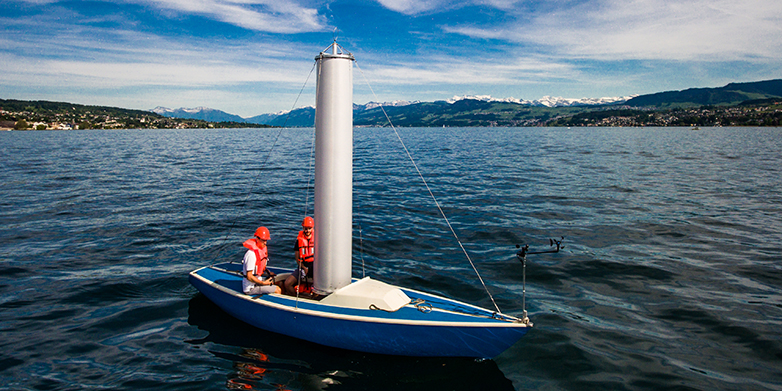Recovering hidden treasures and building boats
Creativity, skill and most of all team spirit are what matter in the innovation and focus projects undertaken in the Department of Mechanical and Process Engineering at ETH Zurich. Students spend months working on their technical innovations, which they will present today in the main ETH building.

A total of 450 students in the second semester of the mechanical engineering course had 12 weeks to work on their innovation projects: Ninety teams of five were tasked with developing a machine capable of recovering treasure from inside a sunken ship on the seabed – as a scale model and without water, of course. The 16 teams with the best technical solutions presented their competing solutions on the 31st of May in the main ETH Zurich building.
Putting new knowledge into practice
“The innovation project involves a fictitious challenge, but is supposed to have a demonstrative purpose and be fun,” explains Timon Heinis, who supervises the students as project leader. Mirko Meboldt, a professor in the Department of Mechanical and Process Engineering, has been organising the innovation project for four years now. The project gives students an opportunity to use the knowledge they have learned in a hands-on way. These future engineers have cutting-edge laser cutters, 3D printers, electronic control components and a workshop full of tools and other machinery at their disposal to help them build their machines. Students who are further along in their studies help coach the teams.
“We built an extendable arm with adhesive tape on the front to lift, transport and deposit the treasures,” explains Gabriel Pfeiffer. Although other teams initially delegated the different tasks, Pfeiffer’s group managed to get started immediately. “A positive group dynamic developed quickly, as we already knew each other from school and military service,” he says. The biggest challenge for his team was building the interfaces between the individual modules. Ruben Massler’s team went about the development process in a completely different way: “First, we developed two or three prototypes and then combined the best from each one.”
Performance test in action
The results are assessed according to two criteria: design and performance. “In the case of the design, what matters is quality, the cost of materials and the degree of innovation,” explains Heinis. Performance is assessed based on how the machines work in practice.
The focus projects in the fifth and sixth semesters are more demanding than the innovation projects. About a fifth of all mechanical engineering students opt for this option while working towards their bachelor’s degree. They have eight months to develop fully functional systems. Each of the nine teams had a different objective, taken from a variety of possible applications ranging from robotics through to medicine.
Unusual watercraft
Over the past few days, sailors, rowers and boaters out on Lake Zurich have had the chance to see just what these projects are capable of achieving. For example, an unusual watercraft with a sort of chimney of sail canvas was seen on the water. “We developed a folding rotor sail,” explains Franz Radke, a student in his sixth semester in the Department of Mechanical and Process Engineering. The cylindrical sail makes use of what is known as the Magnus effect: when wind collides with a rotating round body, airflow is accelerated at varying intensities, creating a force that allows the boat to glide forwards. A small electric motor also rotates the sail almost silently – and the wind takes care of the rest. The idea behind the design is to create an energy-efficient alternative to a motorboat, since the rotor sail makes it possible to reduce energy consumption by an average of 30%.
The idea for this focus project ‘Eolos’ came from Radke, who began studying the Magnus effect when he was still at school. After he managed to impress the department conference and obtain its approval, he put the project together with five other ETH mechanical engineering students and two industrial design students from the Zurich University of the Arts (ZHdK). The students were supervised by the Engineering Design and Computing Laboratory at ETH Zürich.
In the process, the students learned much more than simply how to construct the sail; they also had to prepare a project plan, find sponsors and industrial partners, and obtain permits from the Swiss Maritime Navigation Office. “We suddenly realised that we weren’t just working on a virtual computer model – we were building an actual vessel,” says Radke. The sail is four metres high and attached to the hull of an old 6.3 metre sailboat.
The boat will be on display in the main hall of ETH on 31 May alongside the eight other focus projects. The participants will also be presenting the results from their focus projects in the Auditorium Maximum from 2.00 pm to 3.45 pm.
